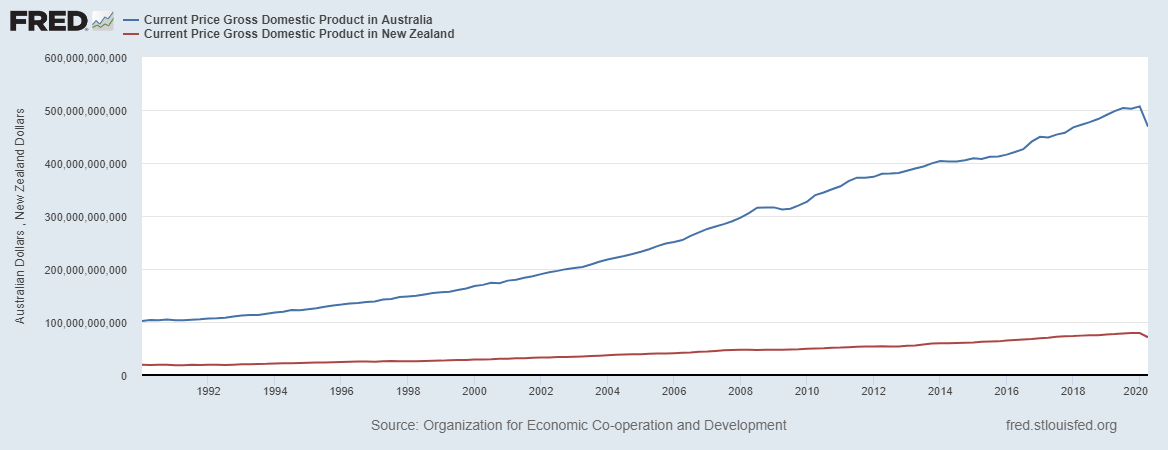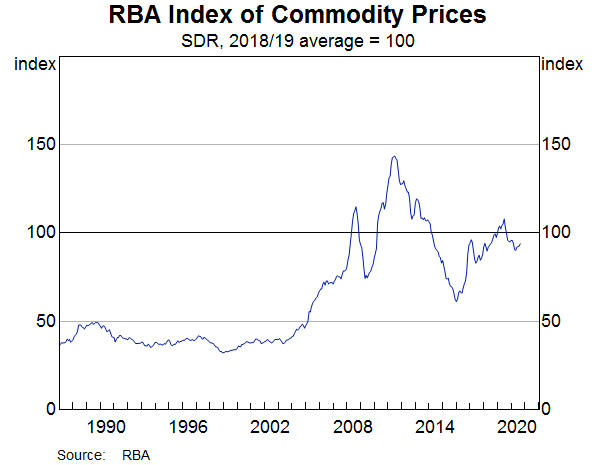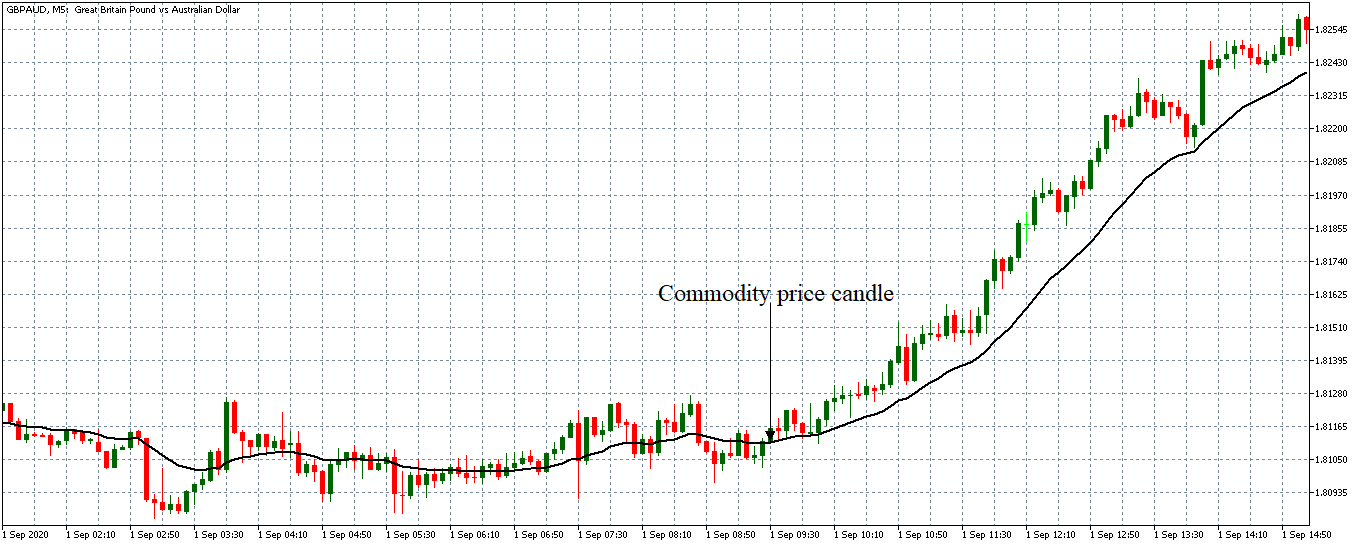Introduction
Thanks to international trade, some countries prosper disproportionately than others. The disproportionality in the balance of payments is mostly owed to the type of exports a country produces. Countries that are net exporters of precious commodities tend to have a better balance of payment than net importers. For this reason, the fluctuation of these commodities tends significantly affect their economy.
Understanding Commodity Prices
A commodity can be defined as any physical product that can be traded in any form of exchange. With commodities, there is little differentiation, if any, regardless of where they originate. For example, we can say that an ounce of gold from South Africa is the same as an ounce of gold from Australia.
Naturally, different parts of the world are endowed with different types of natural resources. Furthermore, since commodities are inherently used to produce other goods and services, their value entirely depends on their rarity and demand. Take Copper and Wheat, for example. Both are commodities. But you cannot compare the value of a kilo of copper and a kilo of wheat. Copper is a rare and limited precious commodity, while wheat is readily cultivated. Therefore, a country that is a net exporter of copper will have a better balance of payment than a country that is a net exporter of wheat.
Furthermore, let’s take an example of country A with the largest deposit of commodity X in the world. In this case, country A is basically a monopoly; if it wanted to control the commodity prices, it would reduce the production of the commodity. By doing so, the demand for commodity X would exceed the supply, which means that country A will receive higher prices. Now, imagine a scenario where vast deposits of commodity X are discovered in country B. It now means that the supply of commodity X in the international market will increase, and as a result, the price of commodity X will decrease.
For countries whose economies heavily dependent on commodity exports, the fluctuation of commodity prices heavily impacts the earnings. Furthermore, the changes in the demand for these commodities also affect the GDP of these countries. Note that the price of these commodities also varies depending on their quality. For commodities which are used for trading in the future market, the minimum quality accepted is called the basis grade,
Using Commodity Prices in Analysis
The commodity prices usually tend to impact the economies which heavily rely on the export of commodities to fund public expenditures.
An increase in commodity prices means that the producing country will receive more income. In turn, this translates to increased wages for workers involved in the production or mining of the commodity. Since households are well compensated, their welfare will significantly increase. Note that for countries heavily dependent on commodity exports, these commodities’ mining or production usually employs a majority in the labor market. Therefore, an increase in wages will significantly impact the changes in the aggregate demand in the economy for consumer goods and services.
This increase in demand tends to lead to an increase in the production of consumer goods. As a result, there will be an expansion of the consumer industry. More so, the expansion of these sectors leads to more job creation hence lowering unemployment levels. Other sectors of the economy will also benefit from this increase in wages. The real estate sector will also flourish since the increase in wages means that households can now afford to fund the purchase of homes or qualify for mortgages.
Conversely, a decline in the prices of commodities means that the labor involved will be compensated lesser. The resultant effect will be a contraction in demand for consumer goods and services since households will be forced to prioritize expenditure on essential products. Consequently, the consumer discretion industry will contract as producers scale down operations to match the decreased demand. As a result, some jobs in these sectors will be lost, contributing to increased unemployment. Therefore, we can see there is a direct link between the changes in commodity prices to the growth of the domestic economy and changes in the domestic employment levels.
Let’s look at another scenario. Say the economy of country A is intertwined with that of country C – country A imports multiple commodities from country C. Since country A’s economy heavily relies on commodities, the prices of these commodities increase, which means that the balance of payment of country A improves and that its citizens are well off. Thus, country A can afford to import more products from country C. therefore, country C’s economy will prosper. Increased imports from A means that production in C will increase, expand its economy, and improve labor market conditions.
Conversely, when commodity prices fall, it means that economic conditions in country A might deteriorate. Consequently, imports from country C will decrease, leading to either C’s economy to contract or a slowdown in its growth. This is usually the case with Australia and New Zealand, whose economies are close to each other.
Source: St. Louis FRED
Therefore, commodity prices do not just affect the economy of countries whose exports are majorly comprised of commodities.
Impact on Currency
The impact of the changes in the commodity price in the forex market is pretty straightforward.
When a country exports a commodity to the international market, it is paid in its currency. Therefore, when the commodity prices increase, it means that the domestic currency will be in high demand. Importers of the commodity will have to convert more of their currencies into the domestic currency. As a result, the value of the domestic currency will appreciate relative to other currencies.
On the other hand, a fall in the commodity means fewer amounts of the domestic currency will be required to purchase the exports. Consequently, the domestic currency will marginally depreciate relative to others.
Sources of Data
In Australia, the Reserve Bank of Australia publishes the Index of Commodity Prices report monthly.
Source: RBA
Trading Economics has a comprehensive list of commodity prices in both the spot and futures market.
How Commodity Prices Data Release Affects The Forex Price Charts?
The latest publication of the Index of Commodity Prices report by the RBA was on October 1, 2020, at 6.30 AM GMT and can be accessed at Invetsing.com. The release of the commodity prices is expected to have a low impact on the AUD.
In September 2020, the YoY the Australian commodity index decreased by 5.8% compared to a 10.2% decline in the YoY index for August 2020.
Let’s see if this release had an impact on the AUD.
GBP/AUD: Before Commodity Price Release on October 1, 2020, just before 6.30 AM GMT
The GBP/AUD pair was trading in a neutral pattern before the publication of the Australian commodity index. The 20-period MA was flattened with candles forming just around it.
GBP/AUD: After Commodity Price Release on October 1, 2020, at 6.30 AM GMT
The pair formed a 5-minute bullish candle when the commodity prices were released. Subsequently, the 20-period MA steadily rose with candles forming above it, showing that the AUD weakened against the GBP.
Bottom Line
In Australia, commodity exports account for about 50% of the export income. While this report plays a vital role in forecasting the Australian economy, it is a low-impact economic indicator in the forex market.











